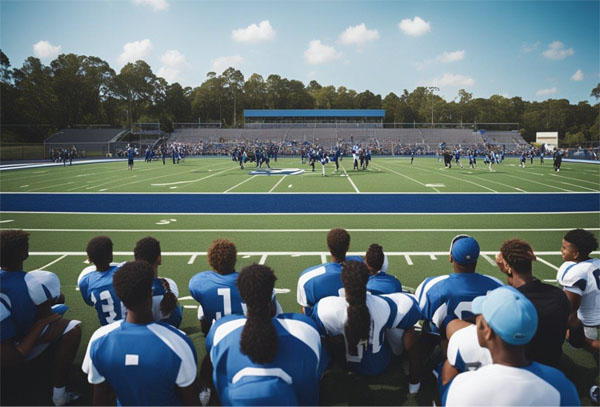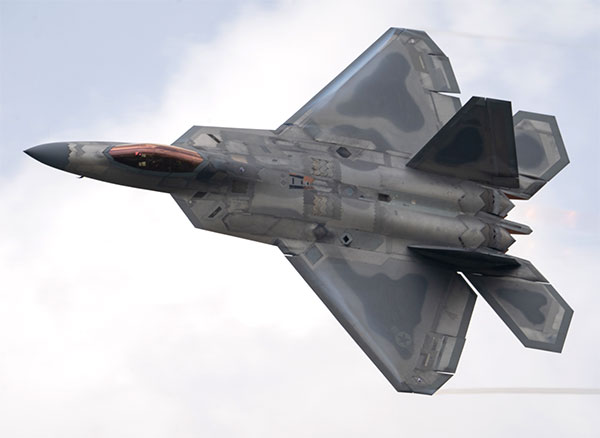Florida’s High School Sports Boom: How Coaches Are Adapting to New Tech
By Space Coast Daily // March 12, 2025

High school sports in Florida are changing as coaches adopt new technology to improve their teams. From football to softball, schools are using digital tools for better training, performance tracking, and game-day communication.
Coaches now rely on film editing, data analysis, and approved communication devices to develop players and boost team success.
This technological revolution isn’t merely about keeping up with trends—it’s reshaping the fundamental approach to coaching young athletes. Coaches now have unprecedented ability to edit film for specific players, creating personalized development plans that address individual strengths and weaknesses. Meanwhile, the National Federation of State High School Associations has approved on-field communication devices for softball, allowing coaches to provide real-time guidance to catchers during games.
Beyond game-day applications, Florida coaches are navigating complex new realities including NIL (Name, Image, Likeness) opportunities for their athletes, requiring them to manage team dynamics while ensuring individual opportunities don’t undermine collective goals. These technological adaptations require investment, but forward-thinking coaches recognize that performance technology provides competitive advantages that outweigh initial costs.

The Evolution of High School Sports in Florida
Florida’s high school athletic programs have undergone remarkable transformation over the decades, shifting from basic physical education to sophisticated, technology-enhanced training environments that prepare students for collegiate and professional opportunities.
Historical Overview of High School Sports
High school sports in Florida began as informal physical activities in the early 20th century, gradually developing into organized competitive programs by the 1920s. The Florida High School Athletic Association (FHSAA) formed in 1920, establishing standardized rules and competitions across the state.
The post-WWII era saw significant expansion with schools investing in proper facilities and dedicated coaching staff. By the 1970s, football emerged as the dominant sport, though basketball, baseball, and track also gained substantial followings.
Girls’ sports experienced dramatic growth after Title IX implementation in 1972, creating more equitable athletic opportunities. The 1980s-90s witnessed further diversification with the introduction of soccer, swimming, and volleyball programs gaining prominence in schools throughout the state.

Recent Growth Trends
Florida has experienced unprecedented growth in high school athletics over the past decade. Student participation rates have increased approximately 15% since 2015, with notable expansion in non-traditional sports like lacrosse, water polo, and beach volleyball.
Technology adoption has revolutionized training methods. Many programs now utilize video analysis software, wearable performance trackers, and specialized apps to monitor athlete development and game strategy.
Recruitment processes have transformed as digital platforms enable coaches to evaluate talent across wider geographical areas. This has created more scholarship opportunities for Florida athletes while increasing competitive pressure.
Private training facilities like IMG Academy have established Florida as a destination for elite athletic development, influencing public school programs to enhance their training methodologies.

Impact of Population Increases
Florida’s population surge has directly fueled high school sports expansion. The state welcomed over 2.7 million new residents between 2010-2020, necessitating dozens of new high schools with accompanying athletic programs.
Demographic diversity has enriched the competitive landscape, bringing varied sporting traditions and approaches. Sports like soccer have seen particular growth in areas with significant international populations.
Funding disparities have emerged between affluent and economically challenged districts. Schools in rapidly growing suburbs often feature state-of-the-art facilities while many urban and rural programs struggle with limited resources.
Year-round training has become increasingly common as competition intensifies, with many athletes specializing in a single sport rather than participating seasonally in multiple activities. This trend has raised concerns about burnout and overuse injuries among developing athletes.
Technological Innovations in Sports Training
Florida high school sports programs have embraced cutting-edge technology to enhance athlete development and team performance. These tools offer coaches unprecedented insights while giving student-athletes competitive advantages previously available only at collegiate and professional levels.
Wearable Tech for Performance Tracking
GPS trackers and heart rate monitors have become standard equipment for many Florida high school teams, particularly in football and track programs. These devices capture real-time data on speed, distance covered, and physiological metrics during practices and games.
Coaches at schools like St. Thomas Aquinas and IMG Academy utilize wearable sports technology to monitor athlete fatigue levels and prevent injuries. The data helps create individualized training regimens based on each player’s physical capabilities.
Jump monitors and force plates are increasingly popular among basketball and volleyball programs. These tools measure vertical leap metrics and landing forces, allowing coaches to identify areas for improvement in jumping technique.
Smart clothing with embedded sensors has started appearing in elite high school programs. These garments track muscle activation and movement patterns, offering insights into biomechanical inefficiencies that might otherwise go unnoticed.

Video Analysis Software
High-definition cameras and specialized software have revolutionized how Florida coaches break down game film and practice footage. Programs like Hudl and Sportscode allow for detailed tagging of plays and automatic compilation of highlight reels.
Remote coaching possibilities have expanded, with platforms enabling coaches to annotate video clips and share them with athletes via smartphone apps. This extends learning beyond practice hours and creates visual references for skill development.
Many schools have installed multi-angle camera systems in gymnasiums and fields. These systems provide comprehensive views of play execution, making it easier to identify tactical advantages and areas needing improvement.
Gesture recognition technology is gaining popularity in sports like baseball and golf. AI-driven insights analyze swing mechanics and pitching motions, comparing them to ideal form models and suggesting adjustments.

Data-Driven Coaching Tools
Performance analytics dashboards have become essential for Florida’s competitive high school programs. These platforms aggregate statistics from games and practices, enabling coaches to identify trends and make evidence-based decisions.
Predictive modeling software helps coaches forecast opponent strategies based on historical data. Programs like Naples High and American Heritage use these tools to prepare game plans tailored to specific matchups.
Virtual reality training systems are emerging in football and basketball programs. Athletes can experience game situations repetitively without physical wear, improving decision-making skills through VR and AR technologies.
Cloud-based collaboration tools enable coaching staffs to share insights and coordinate training approaches. These platforms centralize communication and ensure consistency across junior varsity and varsity teams.
Innovation management systems create environments where coaches feel comfortable experimenting with new technological approaches. Programs that embrace this mindset often lead in adopting beneficial training technologies.
Adapting Coaching Methods for the Digital Age
Florida high school sports programs are rapidly transforming as coaches embrace new technologies to enhance athlete performance. The integration of digital tools is revolutionizing traditional coaching approaches while creating new opportunities for personalized training.
Integrating Tech into Training Regimens
Florida coaches are increasingly incorporating wearable technology to track athlete performance metrics. GPS trackers, heart rate monitors, and motion sensors provide real-time data on speed, distance covered, and physical exertion during practices.
Video analysis has become essential in Florida high schools, with platforms allowing coaches to break down game footage for specific players. This individualized coaching approach enables athletes to receive personalized feedback on technique and decision-making.
Mobile apps are streamlining communication between coaches and players. Many Florida teams use specialized platforms to distribute training schedules, workout plans, and game strategies directly to athletes’ devices.
Data analytics tools help coaches identify patterns in performance metrics. These insights allow for tailored training programs that address specific weaknesses and build on individual strengths.
Balancing Traditional and Modern Techniques
Successful Florida coaches are finding ways to blend time-tested methods with innovative technologies. The most effective programs maintain core fundamentals while enhancing them with data-driven insights.
Coaching practices can be enhanced by integrating principles from both traditional and contemporary approaches. Florida coaches are becoming more adaptable, knowing when to rely on experience and when to trust the data.
Face-to-face communication remains vital despite technological advances. Effective coaches use digital tools to supplement rather than replace important personal connections with athletes.
Team culture development still requires human leadership. Technology serves as a tool that amplifies coaching capabilities without diminishing the importance of mentorship and character building.
Education and Skill Development for Coaches
Florida high school athletic departments are investing in professional development for coaching staff. Training programs focus specifically on effectively implementing sports coaching technology and interpreting the resulting data.
Coaches are forming professional learning communities to share best practices. These collaborative networks allow for knowledge exchange about successful tech integration strategies across different sports and schools.
Technical literacy has become as important as sport-specific knowledge. Forward-thinking programs prioritize hiring and developing coaches who demonstrate both coaching expertise and technological competence.
Partnerships with sports technology companies provide valuable training opportunities. Many Florida schools collaborate with tech providers to ensure coaches receive proper instruction on maximizing the benefits of new systems.
Improving Athlete Performance with Advanced Tech
Florida high school sports programs are embracing cutting-edge technology to enhance athletic performance across all competitive levels. These innovations provide coaches and athletes with precise data and actionable insights that were previously unavailable.
Personalization of Training Programs
The integration of technology has revolutionized how coaches design individual training regimens for student-athletes. Technology-driven training methods now enable coaches to fine-tune approaches based on precise performance data rather than general observations.
GPS tracking vests and advanced motion sensors collect real-time metrics on speed, acceleration, and movement patterns. This allows coaches to identify specific areas where athletes need improvement.
Video analysis software with AI capabilities breaks down technique frame-by-frame, giving athletes visual feedback on form correction. Many Florida high school programs now utilize these tools during practice sessions to make immediate adjustments.
Popular Training Tech in Florida High Schools:
- Force plate systems measuring power output
- Smart equipment tracking repetitions and form
- Personalized mobile apps delivering custom workouts
- Virtual reality training simulations for sport-specific scenarios
Injury Prevention and Recovery
Modern technology has transformed injury management in high school athletics, shifting focus from treatment to prevention. Smart wearables monitor fatigue levels and biomechanical stress, alerting coaches when athletes approach injury-prone conditions.
Recovery tools like pneumatic compression devices and cryotherapy chambers, once available only to professionals, are now found in many Florida high school athletic departments. These technologies accelerate recovery between intense training sessions and competitions.
Coaches can adjust training plans based on biometric data, reducing injury risks through smarter workload management. Some schools implement baseline concussion testing using VR headsets that detect subtle changes in cognitive function.
Sleep and recovery tracking apps help student-athletes monitor rest quality, ensuring proper recovery cycles. This holistic approach has reduced injury rates across multiple sports programs statewide.
Nutrition and Fitness Monitoring
Advanced nutrition monitoring has become essential in Florida’s high school sports programs. Digital platforms now track macronutrient intake and hydration levels, syncing with training data to optimize performance fueling strategies.
Body composition analyzers provide accurate measurements of muscle mass, body fat, and hydration status. Coaches use this information to tailor nutrition plans that support athletic development and performance goals.
Hydration monitoring systems using smart water bottles track fluid intake during practices and games. This technology has proven particularly valuable in Florida’s hot climate, where dehydration poses a significant risk to performance and health.
Smart scales and fitness trackers integrate with comprehensive athlete management systems to provide coaches with complete pictures of physical development. Florida Tech’s coaching methodology demonstrates how these integrated approaches maximize athletic potential through data-driven decisions.
The Role of Analytics in Sports Strategy
Florida high school sports programs are increasingly turning to data-driven approaches to gain competitive advantages. Coaches across the state are implementing sophisticated analytics systems that transform raw performance data into actionable insights for strategy development, personnel decisions, and in-game adjustments.
Game Strategy Development
Florida high school coaches are using data to assess players’ performance under various conditions. They analyze opponent tendencies through video breakdowns paired with statistical analysis to identify patterns and weaknesses.
Teams in basketball-powerhouse programs like Montverde Academy and IMG Academy utilize shot charts and efficiency metrics to optimize offensive sets. These charts highlight high-percentage shooting areas and inform play designs.
Football programs across the state employ situational analytics to determine optimal play-calling in different down-and-distance scenarios. Some schools have developed proprietary scoring systems that weight various statistical factors based on their specific team philosophy.
Soccer and baseball programs utilize heat maps to visualize spatial tendencies and adjust defensive alignments accordingly. This targeted approach allows smaller programs to compete against schools with larger talent pools.
Player Selection and Team Building
High school coaches now make decisions on player performance using quantifiable metrics rather than just subjective evaluation. Athletic directors and coaching staffs use data to identify complementary skill sets when constructing rosters.
Many Florida schools have implemented testing protocols that measure:
- Speed metrics (40-yard dash, 10-yard splits)
- Strength indicators (bench press, squat maximums)
- Sport-specific abilities (vertical jump, hand-eye coordination)
- Conditioning levels (VO2 max, recovery rates)
These objective measurements help coaches identify players who might otherwise be overlooked. Teams track performance trends throughout the season, allowing coaches to spot developmental patterns and adjust training regimens accordingly.
Multi-sport athletes benefit from cross-sport analytics that identify transferable skills. This comprehensive approach has helped smaller schools maximize limited talent pools by placing athletes in optimal positions.
Real-Time Decision Making
Florida high school coaches increasingly use high-tech tools to sharpen their game plans in real time. Sideline tablets and specialized software allow immediate access to performance data during games.
Basketball teams track live shooting percentages, enabling coaches to draw up plays for players with the “hot hand.” Some advanced programs use wearable technology to monitor player exertion and optimize substitution patterns based on fatigue levels.
Football programs employ real-time analytics for crucial fourth-down and two-point conversion decisions. These systems calculate success probabilities based on historical data and current game situations.
The adoption of wireless communication systems enables coaching staffs to relay analytical insights to players immediately. This instantaneous feedback loop helps athletes make micro-adjustments during competition without waiting for traditional timeouts or halftime discussions.
Conclusion
Technology is changing high school sports in Florida, helping coaches train players, plan strategies, and improve performance. Tools like wearable trackers, video analysis, and real-time data are making teams better prepared and more competitive. The best programs combine new technology with solid coaching skills. As sports continue to evolve, using both data and experience will help teams succeed.












